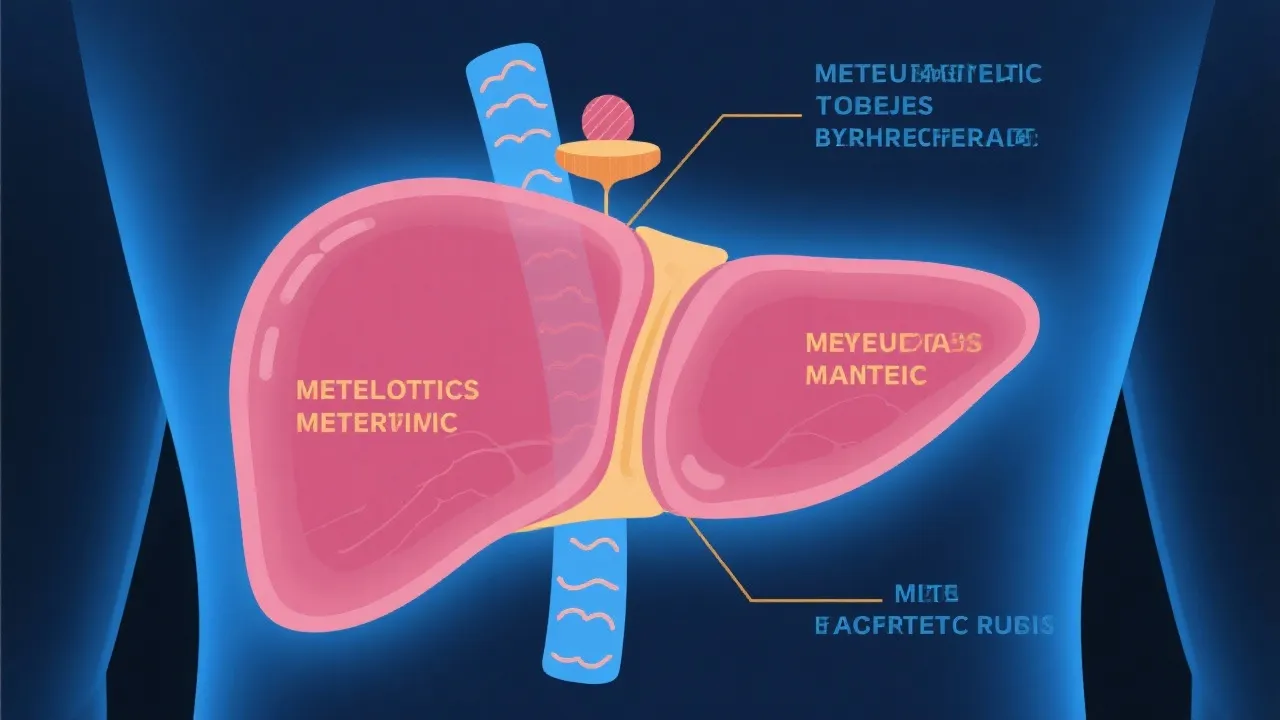This article delves into the intricate relationship between metabolic syndrome and its influence on nonalcoholic steatohepatitis (NASH). Nonalcoholic steatohepatitis is a severe liver condition associated with metabolic syndrome components like obesity, insulin resistance, high blood pressure, and dyslipidemia. Understanding these connections is crucial for preventing disease progression and improving liver health outcomes.

Metabolic syndrome is a cluster of conditions that simultaneously occur, increasing the risk of heart disease, stroke, and type 2 diabetes. These conditions, typically including high blood pressure, high blood sugar levels, excess body fat around the waist, and abnormal cholesterol or triglyceride levels, can also profoundly affect liver health. Particularly, it has a significant impact on the development and progression of nonalcoholic steatohepatitis (NASH), a severe form of nonalcoholic fatty liver disease (NAFLD).
Understanding metabolic syndrome requires looking at its components and how they interact with one another to increase the overall risk of significant health issues. It affects millions of people worldwide and is often associated with lifestyle factors, making effective management strategies essential. Key to tackling metabolic syndrome involves not only recognizing the traits that define it but also the societal and biological factors that contribute to its prevalence.
NASH is characterized by liver inflammation and damage caused by the accumulation of fat in the liver, unrelated to alcohol consumption. This condition can progress to cirrhosis and potentially liver cancer, underscoring the critical need to understand its relationship with metabolic syndrome. With metabolic syndrome being a major risk factor for NASH, individuals with metabolic syndrome are at an increased risk for progression of liver disease.
The pathogenesis of NASH in the context of metabolic syndrome is complex and multifactorial, involving insulin resistance, oxidative stress, and pro-inflammatory cytokines, among other factors. Adipokines, cytokines released from fat tissue, have a direct impact on liver cells and can drive the progression from simple steatosis to NASH. This intricate web of interactions highlights why addressing metabolic syndrome holistically is essential to prevent the progression of liver diseases like NASH.
Moreover, understanding these connections illustrates the importance of early intervention. Individuals exhibiting one component of metabolic syndrome often display others, which compounds their risk. Therefore, urgent attention to cardiovascular health and metabolic factors can lead to improved liver outcomes. Education on comprehending these links can enable better patient advocacy and healthcare solutions.
Managing metabolic syndrome is crucial not only for preventing cardiovascular diseases but also for mitigating the risk of NASH. Effective strategies include lifestyle modifications such as a balanced diet, regular physical activity, and weight loss. Medical interventions might also be necessary depending on individual health profiles. These lifestyle changes are critical as they can create a significant impact on overall metabolic health and liver function.
| Strategy | Pros | Cons |
|---|---|---|
| Lifestyle Changes | Cost-effective, broader health benefits | Requires consistency and commitment |
| Medical Intervention | Targeted treatment, potentially faster results | Possible side effects, potential cost implications |
Both lifestyle changes and medical interventions play essential roles in managing metabolic syndrome and associated conditions like NASH. A combined approach tailored to individual needs often proves to be the most beneficial method. Patients must consider their preferences, resources, and individual health challenges when deciding on the best strategies for management.
Recognizing the intricate relationship between metabolic syndrome and nonalcoholic steatohepatitis is vital for both prevention and management. Through comprehensive lifestyle modifications and medical interventions when necessary, individuals can protect their liver health and overall well-being.
Advocacy and education play integral roles in the effective management of metabolic syndrome and associated liver conditions like NASH. Patients, healthcare providers, and public health officials must work collaboratively to raise awareness about the condition, its risks, and the available prevention and treatment strategies.
Effective patient education encompasses several pivotal aspects:
Furthermore, healthcare professionals must be equipped with updated knowledge about metabolic syndrome and its association with NASH to offer the best patient care. Training programs should emphasize collaborative care, enabling healthcare teams to work together in a multidisciplinary approach that includes dietitians, physical therapists, and mental health professionals.
As our understanding of metabolic syndrome and NASH evolves, so too must our approaches to treatment and prevention. Continuous research is critical to unravel the complexities of these conditions. Future directions may include the following:
Ultimately, an integrated approach involving patient education, healthcare provider training, research, and policy advocacy is essential to tackle the public health challenge posed by metabolic syndrome and its consequences, including NASH.
Metabolic syndrome serves as a significant risk factor for numerous health conditions, particularly NASH. The identification and management of its components can drastically alter disease progression and improve overall health outcomes. By remaining proactive and informed, individuals can combat this syndrome successfully and reduce their risk for serious complications. Further, engaging in advocacy and educational efforts can help broaden awareness of these conditions, thereby fostering a culture of prevention and intervention in communities worldwide.
In summary, the interplay between metabolic syndrome and liver disease emphasizes the need for comprehensive strategies that involve dietary changes, physical activity, regular monitoring, and potential medical interventions. As we progress further into the understanding of these complex relationships, the hope is that both practitioners and patients can navigate the challenges posed by metabolic syndrome and its associated conditions, ultimately leading to healthier lives and stronger communities.
Explore the Tranquil Bliss of Idyllic Rural Retreats

Ultimate Countdown: The 20 Very Legendary Gaming Consoles Ever!

Affordable Full Mouth Dental Implants Near You

Discovering Springdale Estates

Embark on Effortless Adventures: Unveiling the Top in Adventures Made Easy Outdoor Equipment

Unlock the Full Potential of Your RAM 1500: Master the Art of Efficient Towing!

Dodge Ram: Redefining the Future of Full-Size Trucks with Unmatched Power and Innovation

Get New Phones Without Plans Easily

Smart Strategies to Slash Costs on Your Roof Replacement Endeavor
